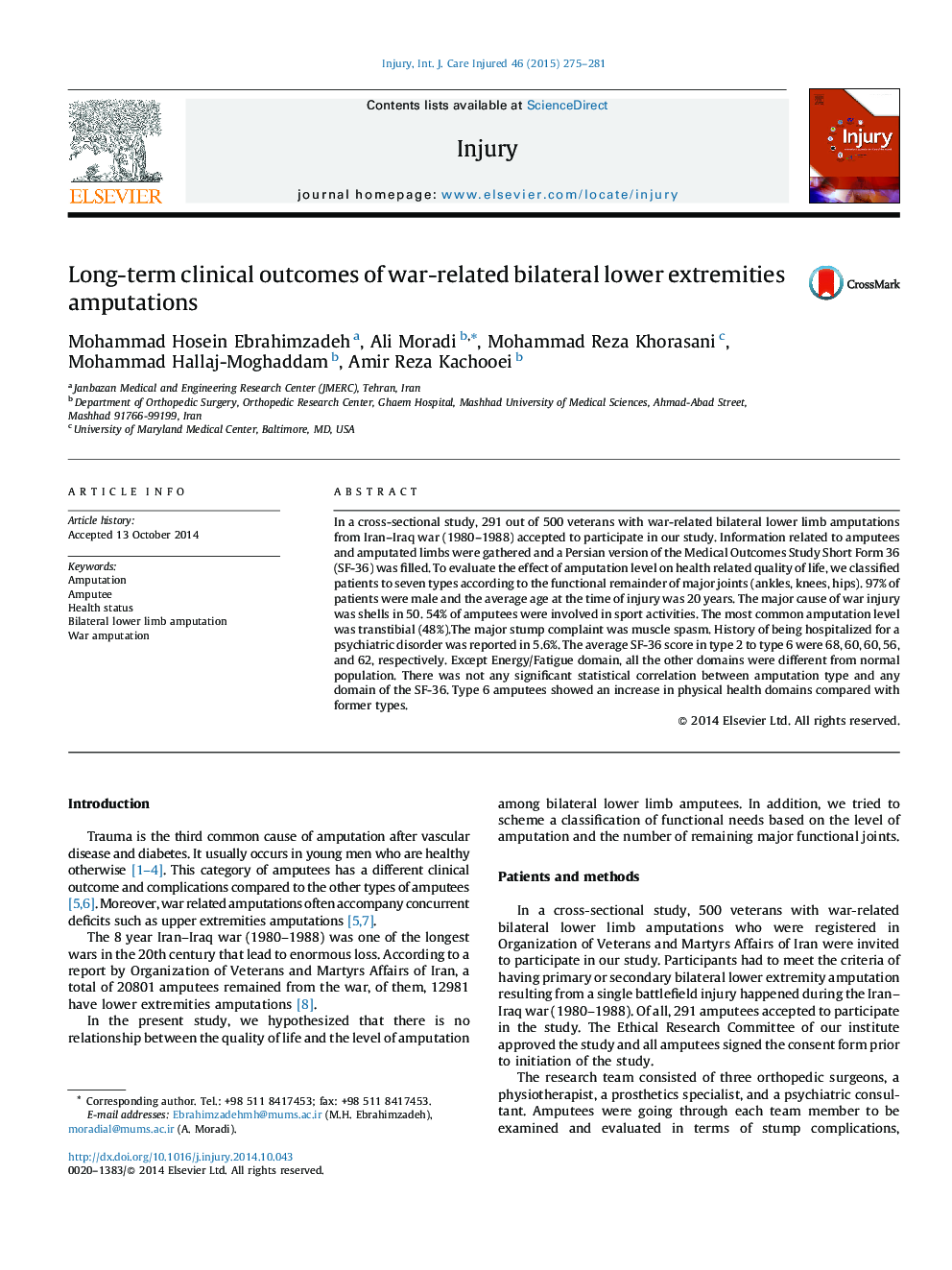| Article ID | Journal | Published Year | Pages | File Type |
|---|---|---|---|---|
| 6083214 | Injury | 2015 | 7 Pages |
Abstract
In a cross-sectional study, 291 out of 500 veterans with war-related bilateral lower limb amputations from Iran-Iraq war (1980-1988) accepted to participate in our study. Information related to amputees and amputated limbs were gathered and a Persian version of the Medical Outcomes Study Short Form 36 (SF-36) was filled. To evaluate the effect of amputation level on health related quality of life, we classified patients to seven types according to the functional remainder of major joints (ankles, knees, hips). 97% of patients were male and the average age at the time of injury was 20 years. The major cause of war injury was shells in 50. 54% of amputees were involved in sport activities. The most common amputation level was transtibial (48%).The major stump complaint was muscle spasm. History of being hospitalized for a psychiatric disorder was reported in 5.6%. The average SF-36 score in type 2 to type 6 were 68, 60, 60, 56, and 62, respectively. Except Energy/Fatigue domain, all the other domains were different from normal population. There was not any significant statistical correlation between amputation type and any domain of the SF-36. Type 6 amputees showed an increase in physical health domains compared with former types.
Keywords
Related Topics
Health Sciences
Medicine and Dentistry
Emergency Medicine
Authors
Mohammad Hosein Ebrahimzadeh, Ali Moradi, Mohammad Reza Khorasani, Mohammad Hallaj-Moghaddam, Amir Reza Kachooei,
